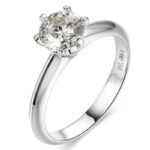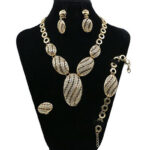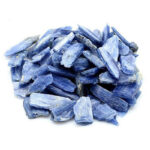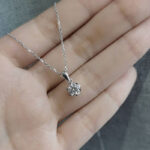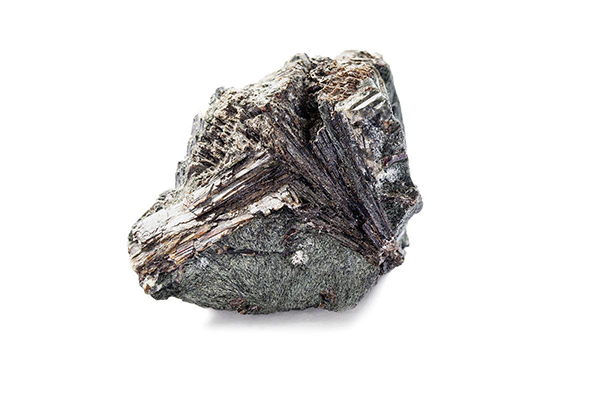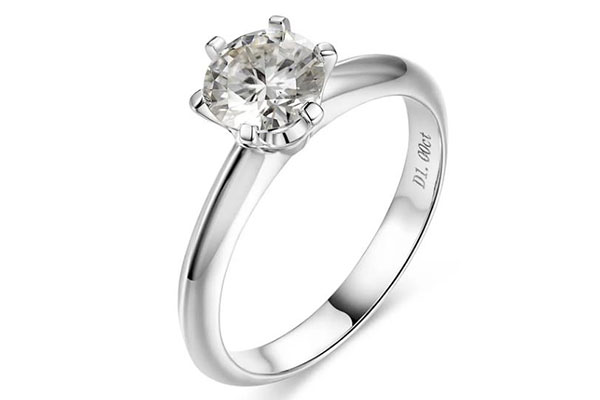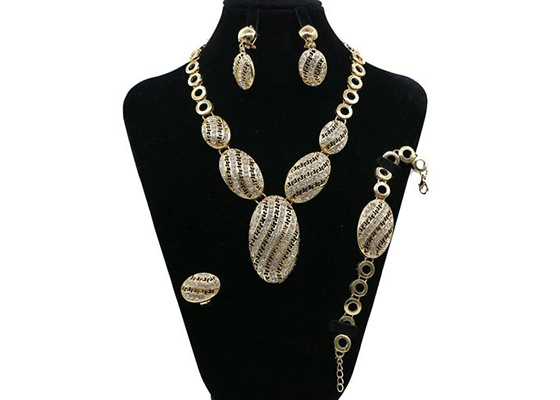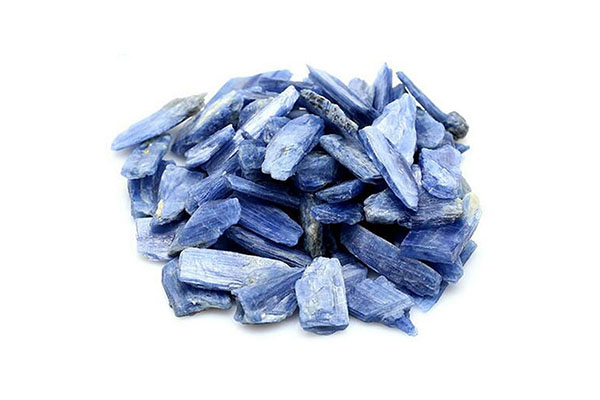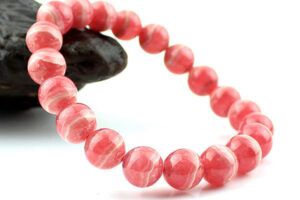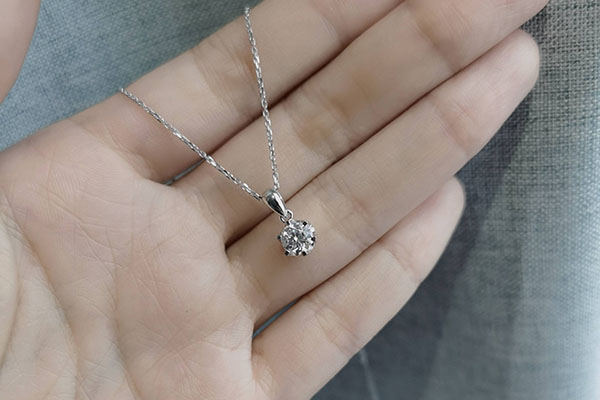Gemstones have been valued for their beauty and rarity for centuries. They are prized for their unique characteristics, and often hold cultural or historical significance. Anthophyllite and astrophyllite are two gemstones that have recently gained attention in the jewelry industry. In this article, we will compare and contrast these two gemstones, highlighting their physical and chemical properties, optical characteristics, and uses and applications.
Background Information
Anthophyllite
Anthophyllite is a mineral that belongs to the amphibole group. It has a chemical formula of (Mg, Fe)7Si8O22(OH)2, and typically forms as elongated, prismatic crystals. Anthophyllite is usually dark green to black in color, and is known for its fibrous or columnar crystal habit. It is a rare mineral that is mainly found in metamorphic rocks such as schist and gneiss.
Astrophyllite
Astrophyllite is a rare mineral that belongs to the astrophyllite group. Its chemical formula is (K,Na)3(Fe,Mn)7Ti2Si8O28(OH)4F, and it forms as bladed or star-shaped crystals that are usually brown to golden yellow in color. Astrophyllite is named after the Greek words “astron” meaning “star” and “phyllon” meaning “leaf”, referring to its characteristic star-shaped crystals that are often found intergrown with other minerals. It is mainly found in alkaline pegmatites and nepheline syenites.
Physical Properties Comparison
Color and Transparency
Anthophyllite is typically dark green to black in color, and is rarely transparent. It is usually translucent to opaque, and its color can range from pale green to dark brown. Astrophyllite, on the other hand, is usually brown to golden yellow in color, and can be transparent to translucent. It is known for its iridescent sheen, which is caused by the reflection of light off its cleavage surfaces.
Hardness and Durability
Anthophyllite has a hardness of 5.5 to 6 on the Mohs scale, which makes it relatively soft and susceptible to scratches and abrasions. It also has a brittle tenacity, which means it can easily break or fracture when subjected to stress or pressure. Astrophyllite, on the other hand, has a hardness of 3.5 to 4, which makes it even softer than anthophyllite. It is also more fragile than anthophyllite, and requires more care when handling or setting in jewelry.
Luster and Sheen
Anthophyllite has a vitreous to dull luster, which means it can range from glassy to earthy in appearance. It does not have a distinctive sheen or iridescence. Astrophyllite, on the other hand, is known for its metallic to submetallic luster, and its characteristic bronze or copper-colored sheen. This sheen is caused by the presence of reflective inclusions within the crystal structure.
Refractive Index and Dispersion
Anthophyllite has a refractive index of 1.635 to 1.684, which means it can bend and slow down light as it passes through the gemstone. It has a low dispersion, which means it does not split light into its component colors. Astrophyllite has a refractive index of 1.64 to 1.74, which is slightly higher than anthophyllite. It also has a moderate to high dispersion, which means it can produce a rainbow of colors when viewed under certain lighting conditions.
Chemical Properties Comparison
Chemical Composition
Anthophyllite is a silicate mineral that contains magnesium, iron, silicon, oxygen, and hydrogen. Its chemical formula is (Mg, Fe)7Si8O22(OH)2. Astrophyllite, on the other hand, is a complex mineral that contains potassium, sodium, iron, manganese, titanium, silicon, oxygen, hydrogen, and fluorine. Its chemical formula is (K,Na)3(Fe,Mn)7Ti2Si8O28(OH)4F.
Stability and Reactivity
Anthophyllite is relatively stable and unreactive when exposed to normal environmental conditions. It is not affected by water, acids, or bases. Astrophyllite, on the other hand, can be reactive when exposed to acids or bases. It can also be affected by changes in temperature and humidity.
Specific Gravity and Density
Anthophyllite has a specific gravity of 3.2 to 3.5, which means it is denser than most common minerals. Its density is around 3.3 g/cm³. Astrophyllite, on the other hand, has a specific gravity of 3.2 to 3.4, which is slightly lower than anthophyllite. Its density is around 3.3 to 3.5 g/cm³.
Heat and Light Sensitivity
Anthophyllite is not sensitive to heat or light, and can be safely exposed to both. Astrophyllite, on the other hand, is sensitive to heat and can be damaged if exposed to high temperatures. It is also sensitive to prolonged exposure to light, which can cause its color to fade over time.
Optical Properties Comparison
Birefringence and Pleochroism
Anthophyllite has a moderate birefringence, which means it can split light into two rays with different refractive indices. It also exhibits weak pleochroism, which means it can show different colors when viewed from different angles. Astrophyllite, on the other hand, has a strong birefringence, which can produce a dramatic doubling effect when viewed under polarized light. It also exhibits strong pleochroism, which can show a range of colors from yellow to red to green, depending on the crystal orientation.
Dispersion and Fire
Anthophyllite has a low dispersion, which means it does not exhibit a significant amount of fire or spectral colors. Astrophyllite, on the other hand, has a moderate to high dispersion, which means it can produce a rainbow of colors when viewed under certain lighting conditions.
Polarization and Dichroism
Anthophyllite is weakly polarizing, which means it can rotate the plane of polarization of light. It also exhibits weak dichroism, which means it can show different colors when viewed along different crystal axes. Astrophyllite, on the other hand, is strongly polarizing, which means it can produce a distinctive interference pattern when viewed under polarized light. It also exhibits strong dichroism, which can show a range of colors from yellow to green to brown.
Fluorescence and Phosphorescence
Anthophyllite does not exhibit fluorescence or phosphorescence. Astrophyllite, on the other hand, can exhibit a weak to moderate yellow-green fluorescence under ultraviolet light.
Uses and Applications Comparison
Historical and Cultural Significance
Anthophyllite has no significant historical or cultural significance. Astrophyllite, on the other hand, has been used as a gemstone and decorative material for centuries. It has been found in Viking burial sites, and was used by the ancient Greeks and Romans in their jewelry and decorative objects.
Gemstone and Jewelry Applications
Anthophyllite is not commonly used as a gemstone due to its lack of color and luster. Astrophyllite, on the other hand, is highly valued as a gemstone due to its unique and striking appearance. It is often cut into cabochons or used as a centerpiece in pendants or earrings.
Decorative and Architectural Applications
Anthophyllite is occasionally used as a decorative stone in architectural applications due to its durability and resistance to weathering. Astrophyllite is also used as a decorative stone, particularly in small decorative objects such as bookends or paperweights.
Metaphysical and Healing Properties
Both anthophyllite and astrophyllite have been associated with certain metaphysical and healing properties. Anthophyllite is believed to enhance mental clarity and promote emotional stability, while astrophylite is believed to aid in meditation and promote a sense of inner peace.
Conclusion
While anthophyllite and astrophyllite may sound similar due to their similar-sounding names, they are actually quite different in terms of their physical and chemical properties, optical properties, and uses and applications. Anthophyllite is a relatively common mineral that is not commonly used in jewelry or decorative applications, while astrophylite is a highly valued gemstone with a unique appearance that has been used in jewelry and decorative objects for centuries. Both minerals have been associated with certain metaphysical and healing properties, making them of interest to those who are interested in such things. Whether you’re a geology enthusiast, a jewelry maker, or simply someone who appreciates the beauty of natural minerals, both anthophyllite and astrophyllite are worth taking a closer look at.

